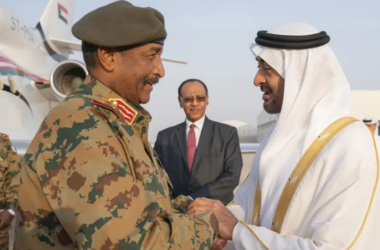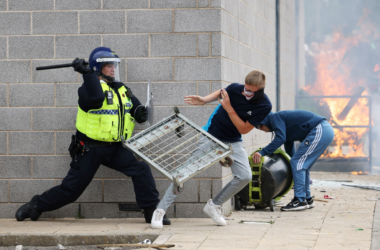In recent years, Russia has undergone a significant transformation in its military strategy and tactics, particularly in response to the lessons learned from its involvement in Ukraine. This evolution has profound implications not only for Russia but also for the broader international security landscape.
One of the most notable lessons learned by Russia was during its annexation of Crimea in 2014 and subsequent involvement in Eastern Ukraine. The international community was taken aback by Russia’s swift and relatively bloodless seizure of Crimea, followed by its support for separatist movements in Eastern Ukraine. This caught many by surprise, and Russia’s hybrid warfare tactics showcased a new way of exerting influence.
However, as the conflict in Eastern Ukraine continued, Russia encountered significant challenges. The Ukrainian armed forces, with Western support, demonstrated resilience and adaptability. Sanctions imposed by the international community began to bite, and Russia found itself facing both military and economic pressure.
As a result, Russia’s military leadership embarked on a process of reevaluation and modernization. Lessons from the Ukrainian conflict prompted reforms in training, equipment, and doctrine. The Russian military started placing greater emphasis on hybrid warfare capabilities, cyber operations, and information warfare.
Furthermore, Russia sought to diversify its military partnerships and reduce reliance on a single theater of operations. This shift led to increased cooperation with countries like China, which also had an interest in countering Western influence. The strengthening of the strategic partnership between Russia and China has added a new dimension to global geopolitics.
The initial underperformance of the Russian military during the early stages of the conflict in Ukraine left many in the West astonished and provided Ukraine with the opportunity to not only resist but also push back against a significant portion of the Russian offensive.
However, Russia has since demonstrated a capacity for learning from its errors, making it increasingly challenging for Ukraine to remove Russian forces from its territory.
Following Ukraine’s successful advancement through Russian lines in the Kharkiv region last autumn, Moscow dedicated months to fortifying its defenses in anticipation of the ongoing Ukrainian counteroffensive in the south. Additionally, Moscow has deployed drones to scout and target Ukrainian positions, a tactic that Kyiv has struggled to counter.
The Russian military has enhanced the guidance systems of older bombs, allowing them to be released from aircraft operating beyond Ukraine’s air defense range, including those flying over Russian territory. Ukraine faces challenges in detecting and intercepting these munitions with its Soviet-era aircraft.
Russia has also relocated command posts and ammunition depots further away from the front lines after Ukrainian strikes utilizing Western-supplied Himars launchers, which launch guided rockets with a range of nearly 50 miles.
In response to the Ukrainian use of extended-range JDAM satellite-guided bombs, Russia has pushed its command posts even further back. These attacks have compelled the Russians to conserve artillery use, extend their already stretched supply lines, and refine their targeting accuracy.
The Russian military has improved soldier protection by constructing deep, heavily fortified trenches. They conceal their tanks and armored vehicles within tree lines and under camouflage netting, launching sorties to engage Ukrainian positions before making swift retreats.
Oleksandr Solonko, a private in a Ukrainian air-reconnaissance battalion near Robotyne, close to Russia’s primary defensive lines in the south, commented, “If we compare this with the start of the invasion, the difference is colossal. They’ve sprayed the fields with mines and set up all sorts of traps. They’ve done it well.”
Ukrainian troops stationed around Bakhmut on the front lines report losing dozens of drones daily due to successful Russian jamming equipment, causing them to crash in enemy territory. While Ukraine’s drone industry has experienced significant growth in recent months, the losses remain substantial. A recent report by the Royal United Services Institute, a London-based think tank, estimated that Ukraine loses approximately 10,000 drones each month, primarily due to Russian electronic warfare.
Russia’s war machine is also evolving domestically, managing to maintain and even increase the production of certain defense items despite facing sanctions.
Initially, Western officials estimated that Russia could produce around 100 tanks annually, but according to a Western defense official, the actual production rate now stands closer to 200 tanks per year.
Similarly, Western defense officials believed Russia might be capable of producing approximately one million artillery shells annually. However, they now anticipate that Russia is on track to produce two million artillery shells annually over the next couple of years.
In summary, Russia’s involvement in Ukraine served as a catalyst for change in its military posture and strategy. While the world watched closely as events unfolded in Ukraine, Russia’s army learned valuable lessons and adapted to a rapidly evolving security landscape. These changes continue to shape Russia’s role in international affairs, making it a key player with significant influence.








